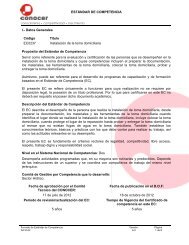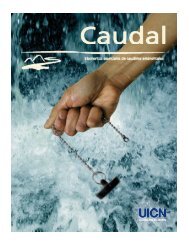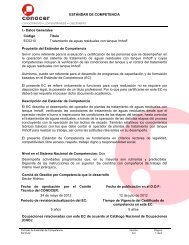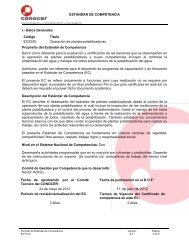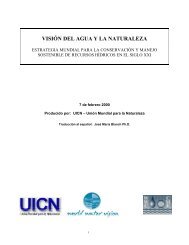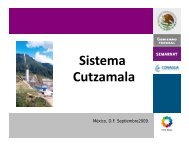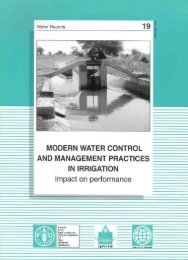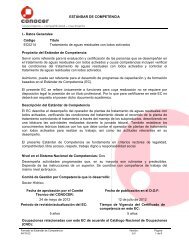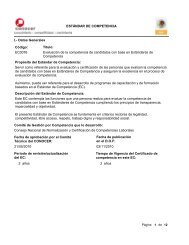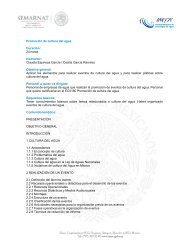Agricultural drainage water management in arid and semi ... - FAO.org
Agricultural drainage water management in arid and semi ... - FAO.org
Agricultural drainage water management in arid and semi ... - FAO.org
You also want an ePaper? Increase the reach of your titles
YUMPU automatically turns print PDFs into web optimized ePapers that Google loves.
16Def<strong>in</strong><strong>in</strong>g the problem <strong>and</strong> seek<strong>in</strong>g solutionsThe terms simple <strong>and</strong> complicated <strong>in</strong> relation to eng<strong>in</strong>eer<strong>in</strong>g or functional <strong>and</strong> scientific modelsare rather subjective. The dist<strong>in</strong>ction between scientific <strong>and</strong> functional refers not only to thepurpose of modell<strong>in</strong>g <strong>and</strong> the <strong>in</strong>tended uses, but also implicitly to the approaches on which themodels are based.The three ma<strong>in</strong> groups of modell<strong>in</strong>g approaches are mechanistic, empirical <strong>and</strong> conceptualapproaches. Mechanistic, or as Woolhiser <strong>and</strong> Brakensiek (1982) def<strong>in</strong>e them, physically-basedmodels are based on known fundamental physical processes <strong>and</strong> elementary laws. In ground<strong>water</strong>modell<strong>in</strong>g, this approach is also known as the Darcian approach. As this approach is based onelementary laws it should be, theoretically, valid under any given condition <strong>and</strong> therefore itstransferability is extremely high. On the other h<strong>and</strong>, empirical approaches are based on relationsthat are established on an experimental basis <strong>and</strong> are normally only valid for the conditionsunder which they have been derived. F<strong>in</strong>ally, conceptual calculation approaches are based onthe modeller’s underst<strong>and</strong><strong>in</strong>g of fundamental physical processes <strong>and</strong> elementary laws, but theseare not used as such to solve a problem. Instead, a concept of the reality is used to tackle aproblem. The best-known example is the bucket-type approach to describe the flow of <strong>water</strong>through unsaturated soil.Scientific models make use of mechanistic calculation approaches whenever possible <strong>and</strong>avoid the use of empirical <strong>and</strong> conceptual approaches. In contrast, functional models might<strong>in</strong>clude any of the three calculation approaches. Here, mechanistic approaches might be <strong>in</strong>cludedas long as they do not conflict with other required model characteristics such as simplicity <strong>and</strong>short calculation time. Empirical <strong>and</strong> conceptual approaches are used <strong>in</strong> functional models asthe only concern is that the model serves its <strong>in</strong>tended purpose.Regional modelsThe employment of a range of <strong>dra<strong>in</strong>age</strong> <strong>water</strong> <strong>management</strong> options results <strong>in</strong> certa<strong>in</strong> benefits,<strong>in</strong>teractions <strong>and</strong> trade-offs not only <strong>in</strong> the place where the measure is implemented but also <strong>in</strong>adjacent <strong>and</strong> downstream areas. To enable decision-makers, managers <strong>and</strong> eng<strong>in</strong>eers to choosefrom different options <strong>and</strong> to study the effects of various alternatives, regional simulation modelswill need to be employed. Regional models normally <strong>in</strong>clude three ma<strong>in</strong> calculation modules, i.e.<strong>water</strong> flow <strong>and</strong> salt transport <strong>in</strong> the unsaturated or vadose zone, through the ground<strong>water</strong> zone<strong>and</strong> through the irrigation <strong>and</strong> <strong>dra<strong>in</strong>age</strong> conduits. Regional models normally require large amountsof data, <strong>and</strong> model calibration <strong>and</strong> validation is a time-consum<strong>in</strong>g exercise. It is beyond thescope of this report to <strong>in</strong>troduce the various models that have been developed <strong>and</strong> the readermay refer to Skaggs <strong>and</strong> Van Schilfgaarde (1999) <strong>and</strong> Ghadiri <strong>and</strong> Rose (1992) for more detail.The follow<strong>in</strong>g sections <strong>in</strong>troduce only some basic calculation considerations of <strong>water</strong> flow <strong>and</strong>salt transport <strong>in</strong> the unsaturated or vadose zone as these form the basis of several of the calculationmethods presented <strong>in</strong> this publication. Where the <strong>water</strong> table <strong>in</strong> agricultural l<strong>and</strong>s is controlledby subsurface <strong>dra<strong>in</strong>age</strong> or where the <strong>water</strong> table is close to the rootzone, <strong>water</strong> <strong>and</strong> salt transportto <strong>and</strong> from the ground<strong>water</strong> is considered as well. However, this publication <strong>in</strong>troduces nospecific ground<strong>water</strong> models or calculation procedures for <strong>water</strong> <strong>and</strong> salt transport <strong>in</strong> the saturatedzone.ROOTZONE HYDROSALINITY MODELSPr<strong>in</strong>ciples of rootzone hydrosal<strong>in</strong>ity modelsRootzone hydrosal<strong>in</strong>ity models may range from simple conceptual to complex scientific models.In the more simple models, the spatial component <strong>in</strong> the control volume (i.e. the crop rootzone)



